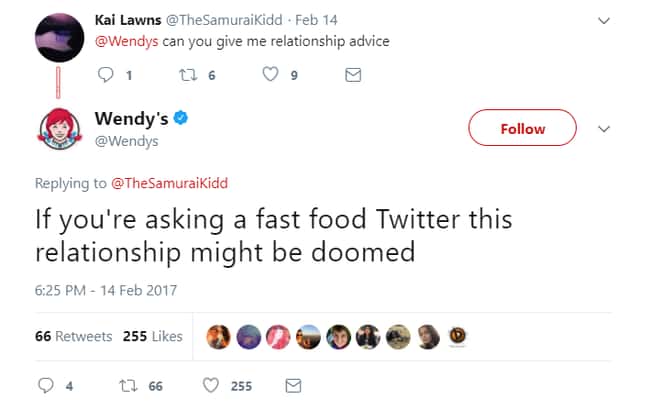By Catarina Vicente
There’s no denying social media has become a powerful tool for brands in their marketing and advertising. Nowadays, any company that wants to have a bigger presence owns several social media accounts, in order to advertise their products, attract new clients, and to create an identifiable ÔÇÿpersona’ to further enhance their brand. With the resurgence of this new marketing strategy it was predictable, and perhaps inevitable, that brands would start incorporating popular culture and memes into their online presence.
Most often seen on Twitter and Instagram, this incorporation of popular culture has been waved off as a pretty blatant attempt to cater to a younger generation, and yet it has elevated the reputation of the few brands who are able to use it well. A notable example is Wendy‘s Twitter account, which some say has spearheaded this phenomenon; the account gained popularity for its integration of memes and ÔÇÿroasts’ into their posts. It has allowed it to build a following of 3.7 million, and even develop its own podcast and Twitch streaming channel. Wendy‘s is the perfect example of a company that successfully met its aim of building not only an online presence, but an identifiable persona ÔÇô the fast-food is now associated with its memes and jokes, and the people who have seen these likely have a more positive image of the restaurant chain. The purpose of this marketing strategy started as a way to familiarize possible consumers with the brand, but the companies that have found more success have gone further, creating a sort of personification of their brand that audiences can relate to. Subconsciously, consumers start developing an empathy towards this persona, through constant exposure to their content, which often leads to an inclination to buy their products.

Regardless, many brands fail to break through on social media, either having minor impact on their online presence, or, in the worst case, actively damaging it. This impact is almost always manageable, and it’s the consistency in quality of posts that truly break or make a brand’s online presence. However, such failed marketing strategies reveal a far more interesting aspect about modern marketing: the widening gap between a new generation of consumers and the companies that desperately grasp for better ways to stay relevant in an ever-shifting popular culture.
This is shown in how many social media users are using their voices to boycott bigger companies, seeing through the social media fa├ºades brands create for themselves. Despite the efforts to appeal to the youth through memes and social media, companies fall short when giving the younger generation what they truly want: transparency. There has been a movement to boycott Wendy‘s, for example, as the company profits from farmworker poverty and enforces codes of conduct that undermine the rights of their workers. This is the problem at the core of the disconnect between companies and a new-generation of consumers: the attempt to appeal by using modern marketing strategies, while keeping traditional corporate approaches, in a cyclical process that fuels a growing disillusion towards capitalism. Above all, it has proved social media is a double-edged sword for companies: a useful tool for advertising and marketing to wider audiences, but also a platform for consumers to rally for important issues and demand for transparency from corporations.
Furthermore, the growing power of the online presence of brands has also opened up a conversation around the way capitalism is seeping into our personal lives; memes, which were normally created by social media users to be enjoyed amongst themselves, can now be the product of a company’s attempt to expand their online presence. The most worrying aspect of this marketing is its integration into normal popular culture, where it’s seen as harmless fun rather than what it really is: a subtle form of advertising that affects the brand’s image in the consumer’s eyes, although subconsciously. And although the effect isn’t always forthright, it is true that having a positive image of a certain brand can make a customer more inclined to invest in said brand.
It’s your choice if you want to be worried about brands and the impact of their social medias ÔÇô whether you see this as a worrying phenomenon or just harmless fun, we’ve all laughed at a brand’s meme at some point. But it’s worthwhile considering the ways in which companies are using popular culture and memes to develop a strong online presence, and how these marketing strategies are being used to draw attention away from corporate unethical practices.


